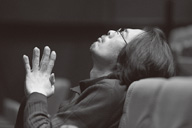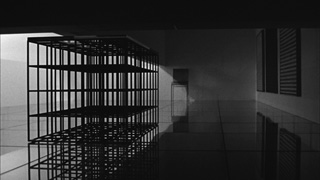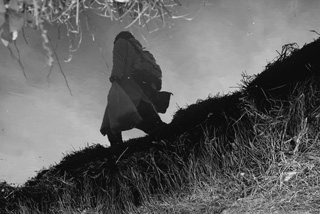Juror
Shichiri Kei
 [Juror’s Statement]
[Juror’s Statement]
Now that anyone can record video and make movies, we seem to increasingly prefer “our films.” The power of independent films and singular, penetrating points of view is not lost, but we do need more than outdated dinosaur-age sensibilities. For example, we may need to be more skeptical about our approach to intimacy. Of course, retaining a sense of “us” is not undesirable—in fact it is crucial—but we must stay aware of the Other and that on the Outside, and remember to question our methods. If we decide that they are OK, we must still be deeply cautious, and even sometimes act as the voice of contention.
How can films cross swords with reality?
I want to encounter films that provoke me to be newly and deeply aware of how insufficient my knowledge and self-awareness still is regarding the presumed inevitability of using cinema to record and describe both the world and the people in it. This is the only principle that could possibly guide me as a juror. Hence, I will likely be tossed about at Yamagata like a small ship in the vast ocean of stimulating documentaries, exhausted.
Born in 1967. In recent years he has focused on experimental projects such as the Cinema From Sound series (2014–) that integrates live performance and works in progress, and the short film DUBHOUSE (2012), made in collaboration with an architect. His most famous film, Once Upon a Dream (2007–2016), shows almost no human forms, using only voices and a suggestion of activity. He also worked as an assistant director on commercial productions and made his own feature films, My Easygoing Sister (2004) and Marriage Ring (2007), has written screenplays, and directed other films. His first film, Time Flicker Symptom (1984), made on 8mm in high school, won at the Pia Film Festival 1985, on the recommendation of Oshima Nagisa.
DUBHOUSE: Experience in Material No.52
 JAPAN / 2012 / No Dialogue / Color / 35mm / 16 min
JAPAN / 2012 / No Dialogue / Color / 35mm / 16 min
Directors: Shichiri Kei, Suzuki Ryoji
Photography: Shichiri Kei, Takahashi Tetsuya
Music: Ikeda Takumi
Colorist: Makino Takashi
Sources: charmpoint, 311 Documentary Film Archive (YIDFF)
A documentary of the installation Busshitsu Shiko 51: DUBHOUSE (Experience in Material No.51: DUBHOUSE) by architect Suzuki Ryoji at the National Museum of Modern Art, Tokyo in 2010. Its original concept of capturing the darkness produced by architecture was dramatically altered by the March 11th, 2011 disaster the following year. Shichiri films both the light and shadows produced by the displayed works, embedding Suzuki’s drawings of the disaster-hit regions within them. Cinemas are inherently dark architectural structures. Films attempting to emerge from that darkness are emitted light, and perhaps a kind of prayer. Both a metafilm on light and darkness, and a response to a historical event.
Another Side / Salome’s Daughter—Remix
(Anazasaido Sarome no musume remix) JAPAN / 2017 / Japanese / Color / DCP / 83 min
JAPAN / 2017 / Japanese / Color / DCP / 83 min
Director: Shichiri Kei
Text: Shinsaku Minori
Music: Higaki Tomonari
Photography: Takahashi Tetsuya, Murakami Takuya, Kawai Hiroki, Honda Takayoshi
Sound, Remix: Unami Taku
Stills: Toyoshima Kisa
Cast: Chosokabe Yoko, Kuroda Ikuyo, Ameya Norimizu, Yamagata Ikuhiro, Kurokawa Yukinori
Voice Artists: Aoyagi Izumi, Hara Masumi, sei
Source: charmpoint
A mysterious note left on the table: “I’m going to the mountain for a bit.” That night my mother took a young me, and we climbed the mountain. I set off on a journey through my memories of “mother.” The second work made using the same soundtrack as Salome’s Daughter, a long recited poem exploring mother, daughter, and absent father. But what are “mother,” “daughter,” “father”? These self-identifications ever fluctuate between polyphonic monologues and the characters’ unclear relationships, stratified image and sound. It might be a dream that orphans see when they dance.
